- You are here:
- Home »
- Indoor Plants
- » Christmas Kalanchoe Care Guide
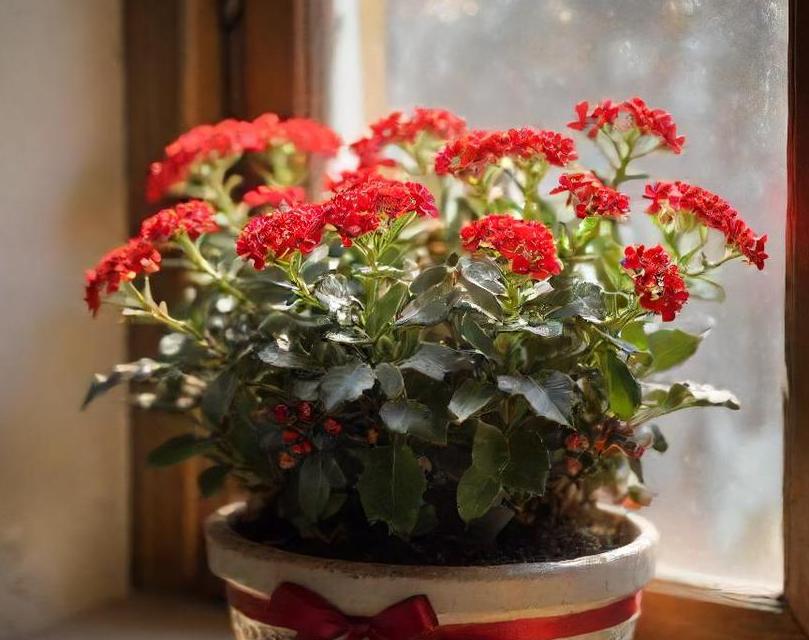
Christmas Kalanchoe Care Guide
Indoor plants not only add a touch of greenery to our living spaces but also offer numerous benefits such as purifying the air and boosting our mood. Among the plethora of indoor plants available, the Christmas Kalanchoe stands out for its vibrant colors and festive appeal. In this comprehensive guide, we will delve into the botanical characteristics, historical and cultural significance, common names, and varieties of the Christmas Kalanchoe, providing you with a deeper understanding of this delightful plant.
Contents
- 1 What Is Christmas Kalanchoe?
- 2 Botanical Characteristics
- 3 Historical And Cultural Significance
- 4 Common Names And Varieties
- 5 Light Requirements
- 6 Soil Requirements
- 7 Temperature Requirements
- 8 Humidity Requirements
- 9 Watering Needs For Christmas Kalanchoe
- 10 Fertilization
- 11 How To Plant Christmas Kalanchoe
- 12 Potting
- 13 Pruning Techniques For Christmas Kalanchoe
- 14 Propagation Methods For Christmas Kalanchoe
- 15 Troubleshooting Problems With Planting Christmas Kalanchoe Indoors
- 16 Conclusion
- 17 FAQS
What Is Christmas Kalanchoe?
The Christmas Kalanchoe, scientifically known as Kalanchoe blossfeldiana, is a species of flowering plant native to Madagascar. Belonging to the family Crassulaceae, this succulent perennial is characterized by its thick, fleshy leaves and colorful clusters of flowers. It is widely cultivated as an ornamental plant and is popularly grown indoors for its decorative appeal.
One of the distinctive features of the Christmas Kalanchoe is its ability to bloom during the winter months, making it a favorite choice for holiday decorations. The plant typically produces clusters of small, bell-shaped flowers in hues of red, pink, orange, or yellow, adding a splash of color to indoor settings during the festive season.
In addition to its decorative value, the Christmas Kalanchoe is valued for its low maintenance requirements, making it an ideal choice for novice gardeners or individuals with busy lifestyles. With proper care, this resilient plant can thrive indoors, brightening up any room with its cheerful blooms.
Botanical Characteristics
Morphology
The Christmas Kalanchoe is characterized by its succulent leaves and vibrant flowers. The leaves are thick and fleshy, arranged in opposite pairs along the stems. They have scalloped or toothed margins, giving them a distinctive appearance. The flowers are borne in terminal clusters, known as cymes, and are typically small and bell-shaped. They come in a range of colors, including red, pink, orange, yellow, and white, adding a burst of color to the plant.
Growth Habit
As a succulent plant, the Christmas Kalanchoe has a compact growth habit, with stems that are upright or slightly spreading. It can reach a height of 6 to 12 inches (15 to 30 centimeters) and a spread of 8 to 12 inches (20 to 30 centimeters) under optimal growing conditions.
Root System
The root system of the Christmas Kalanchoe consists of thick, fleshy roots that store water, allowing the plant to survive in arid conditions. These roots are adapted to absorb moisture efficiently from the soil, enabling the plant to withstand periods of drought.
Flowering
One of the most striking features of the Christmas Kalanchoe is its prolific flowering. The plant typically blooms in response to shortening day lengths, with the onset of flowering occurring in late autumn or early winter. The flowers last for several weeks, providing an extended period of color and beauty.
Propagation
Propagation of the Christmas Kalanchoe is commonly done through stem cuttings or leaf cuttings. Stem cuttings can be taken from the parent plant and rooted in a well-draining potting mix. Leaf cuttings, on the other hand, can be removed from the plant and placed on moist soil to develop roots. Once rooted, the cuttings can be potted up individually to produce new plants.
Historical And Cultural Significance

Origin
The Christmas Kalanchoe is native to the island of Madagascar, where it grows in rocky, arid habitats. It was first discovered by botanists in the late 19th century and was later introduced to cultivation as an ornamental plant.
Symbolism
In many cultures, the Christmas Kalanchoe is associated with festive celebrations and holiday traditions. Its vibrant flowers and ability to bloom during the winter months make it a popular choice for decorating homes and public spaces during the holiday season. In some cultures, the plant is believed to bring good luck and prosperity, making it a cherished symbol of joy and abundance.
Medicinal Uses
In addition to its ornamental value, the Christmas Kalanchoe has been used in traditional medicine for its purported healing properties. In some cultures, extracts of the plant are used to treat various ailments, including wounds, inflammation, and respiratory conditions. While scientific evidence supporting these claims is limited, the plant continues to be valued for its potential medicinal benefits in certain traditional healing practices.
Common Names And Varieties
Common Names
The Christmas Kalanchoe is known by various common names, reflecting its colorful blooms and festive associations. Some of the most common names include:
- Christmas Kalanchoe
- Flaming Katy
- Florist Kalanchoe
- Madagascar Widow’s-thrill
- Florist’s Kalanchoe
Varieties
Over the years, plant breeders have developed numerous cultivars and hybrids of the Christmas Kalanchoe, offering a wide range of flower colors and forms. Some popular varieties include:
- ‘Tessa’: Known for its vibrant red flowers and compact growth habit.
- ‘Calandiva’: A double-flowered variety with large, showy blooms in various colors.
- ‘Lavender Scallops’: Featuring lavender-colored flowers and scalloped-edged leaves.
- ‘Gold Strike’: Notable for its striking yellow flowers with red margins.
- ‘Pink Butterflies’: Characterized by its delicate pink flowers with ruffled petals.
Each variety of the Christmas Kalanchoe has its own unique characteristics, making it easy for growers to find the perfect plant to suit their preferences and decor.
The Christmas Kalanchoe is a charming indoor plant prized for its vibrant flowers, compact growth habit, and festive appeal. With its low maintenance requirements and ability to bloom during the winter months, it has become a favorite choice for holiday decorations and indoor gardens. Whether used as a centerpiece for festive gatherings or as a cheerful addition to home decor, the Christmas Kalanchoe never fails to brighten up any space with its colorful blooms and cheerful demeanor. With proper care and attention, this delightful plant will continue to bring joy and beauty to indoor settings for years to come.
Light Requirements
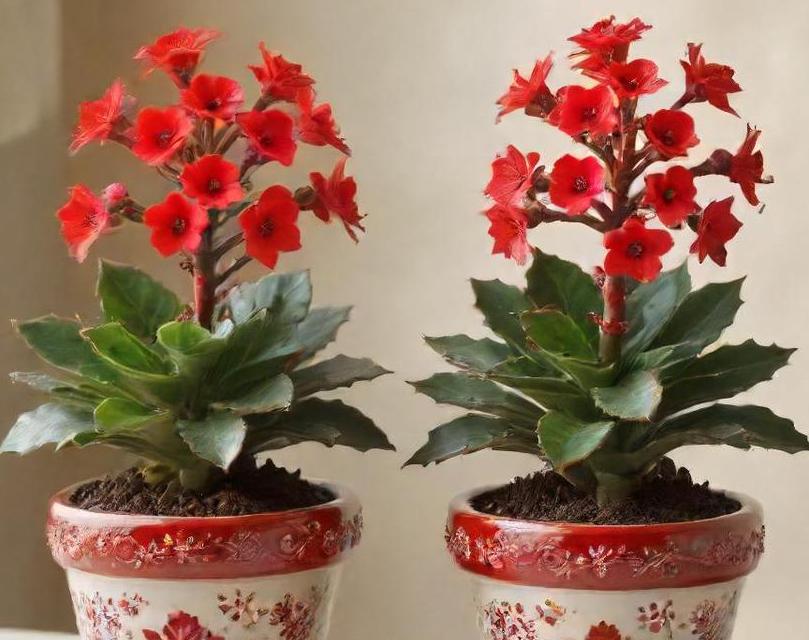
Native to Madagascar, the Christmas Kalanchoe belongs to the Crassulaceae family and is renowned for its clusters of small, bell-shaped flowers that range in color from vibrant reds and pinks to creamy whites and oranges. These colorful blooms typically appear in late fall or early winter, hence the common name "Christmas Kalanchoe."
Aside from its stunning flowers, this plant boasts thick, succulent leaves that store water, making it well-suited to indoor environments with lower humidity levels. Its compact growth habit makes it perfect for tabletops, shelves, or as part of a festive centerpiece during the holiday season.
The Christmas Kalanchoe is relatively low-maintenance, making it an excellent choice for busy individuals or those new to plant care. With proper attention to its light, soil, temperature, and humidity requirements, you can enjoy the beauty of this charming succulent year-round.
Like most succulents, the Christmas Kalanchoe thrives in bright, indirect light. Place your plant near a south- or west-facing window where it can receive plenty of sunlight without being exposed to direct rays, especially during the intense midday hours.
While the Christmas Kalanchoe enjoys sunlight, it’s essential to avoid placing it in direct sunlight for prolonged periods, as this can lead to sunburn and damage the delicate leaves. If your home lacks sufficient natural light, you can supplement with artificial grow lights, providing a suitable spectrum for optimal growth.
During the flowering period, adequate light is crucial for abundant blooms. If your Christmas Kalanchoe isn’t receiving enough light, you may notice stretched stems or a reduction in flower production. In contrast, too much light can cause the leaves to become scorched or faded. Finding the right balance is key to ensuring the health and vitality of your plant.
Soil Requirements
Proper soil composition is essential for the health and well-being of your Christmas Kalanchoe. Like other succulents, it requires well-draining soil to prevent waterlogging, which can lead to root rot and other issues.
A commercially available succulent or cactus potting mix is ideal for Christmas Kalanchoe, as it provides the necessary drainage while retaining some moisture to keep the roots hydrated. Alternatively, you can create your own well-draining soil mix by combining equal parts of standard potting soil, perlite, and coarse sand.
When repotting your Christmas Kalanchoe, choose a container with drainage holes to allow excess water to escape freely. Avoid using pots that are too large, as this can lead to waterlogged soil and increased risk of root rot. Instead, select a pot that provides a snug fit for the plant’s root system, allowing for adequate airflow and drainage.
During the growing season, it’s essential to monitor the moisture levels in the soil and adjust your watering schedule accordingly. Allow the soil to dry out partially between waterings, then water thoroughly, ensuring that excess water drains away. Avoid overwatering, as this can lead to root rot and other fungal diseases.
Temperature Requirements
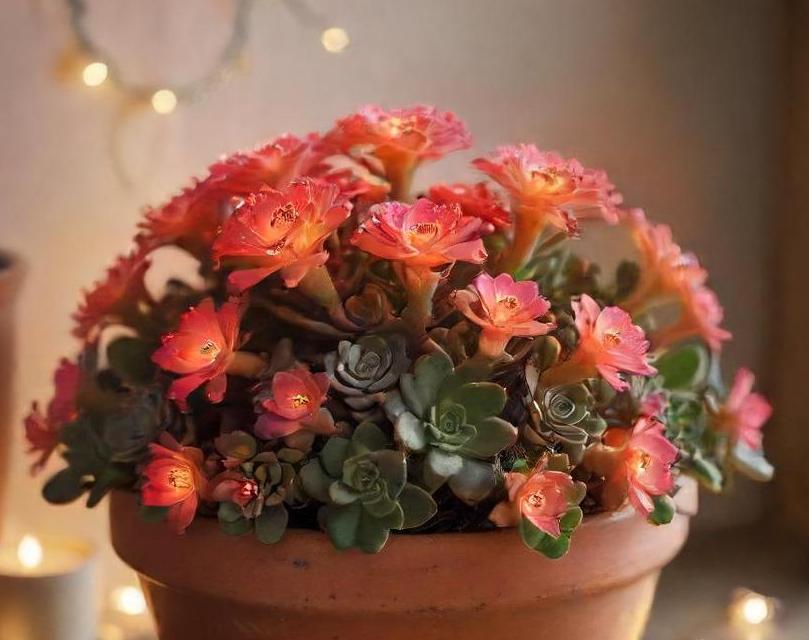
The Christmas Kalanchoe is a tropical plant that thrives in moderate temperatures typical of indoor environments. Ideally, temperatures should range between 60°F to 85°F (15°C to 29°C) throughout the year.
During the growing season in spring and summer, temperatures on the warmer end of this spectrum are preferable, as they promote robust growth and flowering. However, avoid exposing your Christmas Kalanchoe to temperatures above 90°F (32°C), as excessive heat can cause stress and damage to the plant.
In contrast, during the dormant period in fall and winter, cooler temperatures are beneficial for initiating flower bud formation. A slight drop in temperature, particularly at night, can stimulate the plant to produce colorful blooms in time for the holiday season.
Protect your Christmas Kalanchoe from drafts and sudden temperature fluctuations, as these can cause stress and negatively impact growth and flowering. Additionally, avoid placing your plant near heating vents or air conditioning units, as these can create hot or cold spots that may be detrimental to its health.
Humidity Requirements
While the Christmas Kalanchoe is a succulent and can tolerate lower humidity levels, it still benefits from moderate humidity to thrive. Indoor environments often have lower humidity levels, especially during the winter months when heating systems are in use, so it’s essential to provide some supplemental humidity for your plant.
Misting your Christmas Kalanchoe with a fine spray of water can help increase humidity around the plant, especially during dry weather or when central heating is running. However, avoid misting directly onto the flowers or leaves, as this can cause water spots and encourage fungal diseases.
Alternatively, you can place a shallow tray filled with water and pebbles near your plant to create a humid microclimate. As the water evaporates, it increases humidity around the plant without wetting the foliage, providing a beneficial environment for growth and flowering.
During the winter months, when indoor humidity levels are typically lower, you may need to provide more frequent misting or utilize additional humidity-enhancing methods to ensure the health and vitality of your Christmas Kalanchoe.
The Christmas Kalanchoe is a charming and colorful addition to any indoor space, providing year-round beauty with its vibrant blooms and succulent foliage. By understanding and meeting its light, soil, temperature, and humidity requirements, you can ensure that your plant remains healthy and happy throughout the year. Remember to place your Christmas Kalanchoe in a bright, indirect light, use a well-draining soil mix, maintain moderate temperatures, and provide supplemental humidity as needed. With proper care and attention, your Christmas Kalanchoe will reward you with a stunning display of flowers season after season, bringing joy and festive cheer to your home.
Watering Needs For Christmas Kalanchoe
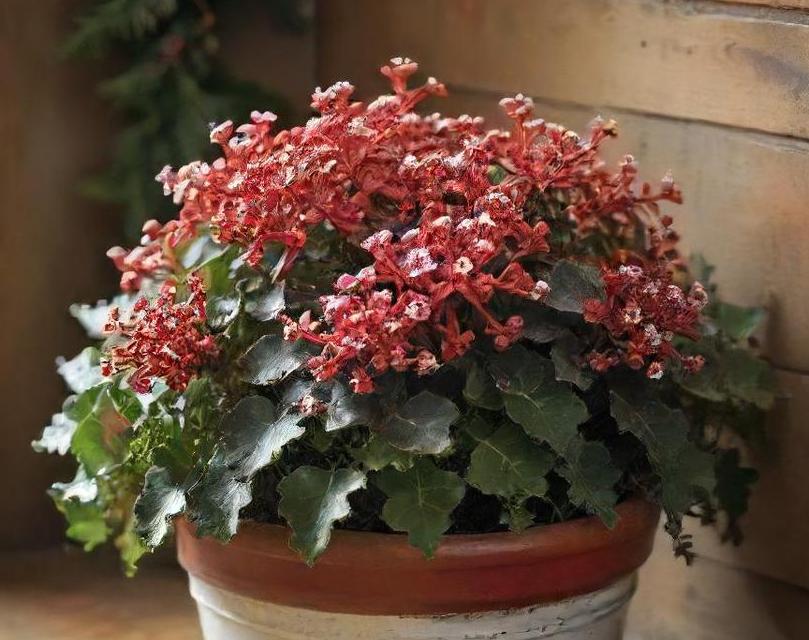
Christmas Kalanchoe, scientifically known as Kalanchoe blossfeldiana, is a charming succulent that is popularly cultivated indoors for its vibrant blooms and easy-care nature. Originating from Madagascar, this plant is named after the German botanist Robert Blossfeld. Its colorful flowers, which typically bloom in shades of red, pink, orange, and yellow, make it a favorite choice for holiday decorations, hence the common name "Christmas Kalanchoe."
Aside from its festive appeal, Christmas Kalanchoe is valued for its resilience and low maintenance requirements, making it an ideal addition to any indoor plant collection.
Proper watering is essential for the health and vitality of Christmas Kalanchoe. As a succulent, it is adapted to arid conditions and is capable of storing water in its fleshy leaves and stems. However, this does not mean it can thrive on neglect. Overwatering is one of the most common mistakes made by plant enthusiasts, leading to root rot and other issues.
The key to watering Christmas Kalanchoe is to strike a balance between keeping the soil moist and avoiding waterlogged conditions. During the growing season, which typically spans from spring to early fall, water the plant thoroughly whenever the top inch of soil feels dry to the touch. Ensure that excess water can freely drain from the pot to prevent waterlogging.
In contrast, during the dormant period in late fall and winter, reduce watering frequency to allow the plant to rest. Water sparingly, allowing the soil to dry out slightly between waterings. Avoid splashing water onto the leaves, as this can promote fungal diseases and rot.
It’s important to note that the watering needs of Christmas Kalanchoe may vary depending on factors such as temperature, humidity, and the size of the plant. Always assess the moisture level of the soil and adjust your watering routine accordingly.
Fertilization
While Christmas Kalanchoe is relatively low-maintenance, occasional fertilization can help promote healthy growth and abundant flowering. During the active growing season, which coincides with spring and summer, provide a balanced liquid fertilizer diluted to half strength every two to four weeks.
Choose a fertilizer specifically formulated for succulents or cacti, as these plants have unique nutritional requirements. Avoid over-fertilizing, as this can lead to fertilizer burn and other problems. Always follow the instructions on the fertilizer label and err on the side of caution when feeding your Christmas Kalanchoe.
During the dormant period in late fall and winter, withhold fertilizer to allow the plant to rest. Resume fertilization in early spring as new growth emerges. Remember that fertilization is just one aspect of plant care and should be complemented by proper watering, adequate sunlight, and appropriate growing conditions.
How To Plant Christmas Kalanchoe
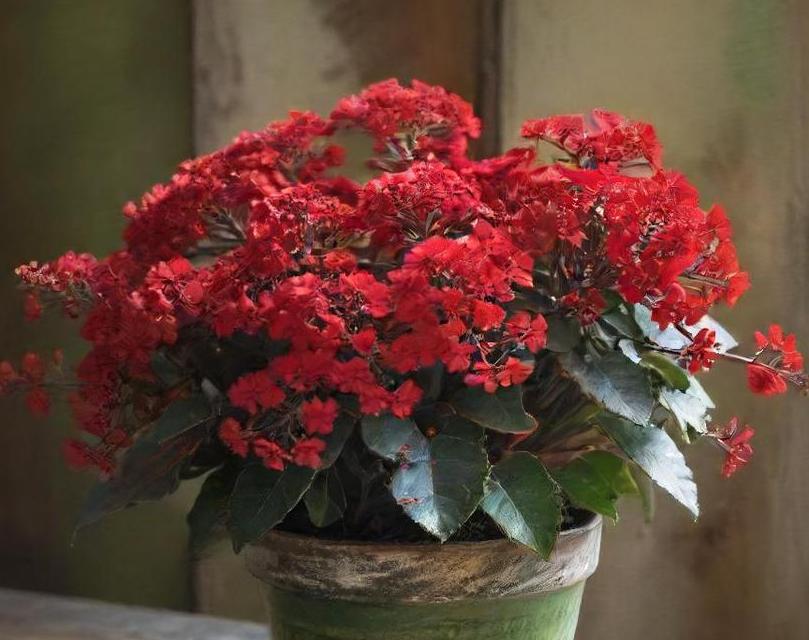
Planting Christmas Kalanchoe is a straightforward process that can be easily accomplished by both novice and experienced gardeners. Follow these steps to ensure successful planting and establishment of your Christmas Kalanchoe:
Selection Of Plant
Start by selecting a healthy Christmas Kalanchoe specimen from a reputable nursery or garden center. Look for a plant with vibrant foliage and no signs of disease or pest infestation. Avoid plants with wilted or discolored leaves, as these may indicate underlying issues.
Potting
Choose a well-draining pot or container with ample drainage holes to prevent waterlogging. Select a pot that is slightly larger than the root ball of the plant to allow room for growth. Fill the bottom of the pot with a layer of gravel or small stones to further improve drainage.
Soil
Use a well-draining potting mix specifically formulated for succulents or cacti. Alternatively, you can create your own mix by combining equal parts of potting soil, perlite, and coarse sand. Avoid heavy, moisture-retentive soils, as they can lead to root rot.
Planting
Carefully remove the Christmas Kalanchoe from its nursery pot and gently loosen the roots to encourage outward growth. Place the plant in the center of the pot and backfill with soil, ensuring that the crown of the plant sits slightly above the soil level. Firmly press down the soil around the plant to remove air pockets.
Watering
After planting, water the Christmas Kalanchoe thoroughly to settle the soil and hydrate the roots. Allow any excess water to drain freely from the pot. Place the newly potted plant in a bright location with indirect sunlight, avoiding direct sun exposure, especially during the hottest part of the day.
Maintenance
Monitor the plant closely in the days following planting to ensure that it adjusts well to its new environment. Resume regular watering and fertilization according to the guidelines outlined earlier. Provide adequate sunlight and maintain consistent growing conditions to promote healthy growth and flowering.
Potting
Repotting Christmas Kalanchoe is typically necessary every one to two years to refresh the soil, promote healthy root growth, and accommodate the plant’s increasing size. Follow these steps to repot your Christmas Kalanchoe successfully:
Timing
The best time to repot Christmas Kalanchoe is in the spring, just before the start of the active growing season. Avoid repotting during the dormant period in late fall and winter, as the plant is less actively growing and may be more susceptible to stress.
Preparation
Select a slightly larger pot with adequate drainage holes to accommodate the growing root system. Prepare a well-draining potting mix as described earlier, or use a commercially available succulent or cactus mix. Have all necessary tools and materials, including gloves and a trowel, ready before beginning the repotting process.
Repotting
Carefully remove the Christmas Kalanchoe from its current pot by gently tipping it on its side and tapping the bottom to loosen the root ball. Inspect the roots for any signs of damage or disease and trim away any dead or rotting roots with clean, sharp scissors or pruning shears.
Soil Renewal
Remove any old or compacted soil from around the roots, taking care not to damage the delicate root system. If the roots are tightly bound, gently tease them apart to encourage outward growth. Place a layer of fresh potting mix in the bottom of the new pot, then position the plant in the center and backfill with soil, firming it down gently.
Watering And Care
After repotting, water the Christmas Kalanchoe thoroughly to settle the soil and hydrate the roots. Allow any excess water to drain away before returning the plant to its usual growing location. Resume regular watering and fertilization as needed, and monitor the plant closely for signs of stress or transplant shock.
Christmas Kalanchoe is a delightful addition to any indoor plant collection, valued for its colorful blooms and easy-care nature. By understanding its watering needs, fertilization requirements, and proper planting and potting techniques, you can ensure that your Christmas Kalanchoe thrives and flourishes year-round. Whether displayed as a festive centerpiece during the holiday season or enjoyed as a cheerful houseplant throughout the year, this charming succulent is sure to bring joy and beauty to your home.
Pruning Techniques For Christmas Kalanchoe
Native to Madagascar, the Christmas Kalanchoe is a member of the Crassulaceae family and is prized for its long-lasting blooms, which typically occur in shades of red, pink, orange, or yellow. These flowers typically appear in late fall and last well into the winter months, hence the common name "Christmas Kalanchoe."
The plant itself features thick, succulent leaves that store water, allowing it to withstand periods of drought. This characteristic also makes it relatively low-maintenance and suitable for indoor cultivation, even for those with less green thumbs.
When properly cared for, the Christmas Kalanchoe can bloom for several weeks, brightening up indoor spaces with its cheerful colors. In addition to its aesthetic appeal, this plant is also known for its air-purifying properties, helping to improve indoor air quality by removing toxins such as formaldehyde and benzene.
Pruning is an essential aspect of caring for Christmas Kalanchoe, as it helps maintain the plant’s shape, promotes healthy growth, and encourages more abundant flowering. Here are some pruning techniques to keep your Christmas Kalanchoe looking its best:
Deadheading Spent Flowers
- As the blooms fade, promptly remove them by pinching or cutting them off at the base of the stem. This process, known as deadheading, redirects the plant’s energy towards producing new flowers rather than seed formation.
- Use clean, sharp scissors or pruning shears to avoid damaging the plant.
Removing Leggy Growth
- If your Christmas Kalanchoe becomes leggy or elongated, prune back the stems to encourage a more compact growth habit.
- Cut back the stems to just above a leaf node using sterilized pruning shears. This will stimulate new growth and help maintain the plant’s overall shape.
Trimming Damaged Or Diseased Foliage
- Inspect the plant regularly for any signs of disease or pest infestation, such as yellowing leaves, brown spots, or webbing.
- Trim away any affected foliage using clean, sharp pruning shears to prevent the spread of disease and promote overall plant health.
Propagation Methods For Christmas Kalanchoe
Propagating Christmas Kalanchoe is relatively straightforward and can be done using several methods, including stem cuttings, leaf cuttings, or division. Here’s how to propagate your Christmas Kalanchoe:
Stem Cuttings
- Select a healthy stem with several leaves and use sterilized pruning shears to make a clean cut just below a leaf node.
- Remove any leaves from the lower portion of the stem to expose the nodes.
- Allow the cut end of the stem to callus over for a few days to prevent rotting.
- Plant the cutting in a well-draining potting mix and water lightly.
- Place the pot in a warm, bright location away from direct sunlight and keep the soil consistently moist until roots develop.
Leaf Cuttings
- Gently remove a healthy leaf from the parent plant, making sure to include a portion of the leaf stem (petiole).
- Allow the leaf cutting to callus over for a few days to prevent rotting.
- Plant the leaf cutting in a shallow tray or pot filled with a well-draining potting mix, burying the petiole in the soil.
- Water the soil lightly and place the tray in a warm, bright location.
- Keep the soil consistently moist and wait for new plantlets to emerge from the base of the leaf.
Division
- Carefully remove the Christmas Kalanchoe from its pot and gently tease apart the root ball into smaller sections.
- Ensure that each division has several healthy stems and roots attached.
- Plant each division in its own pot filled with a well-draining potting mix.
- Water the newly potted divisions lightly and place them in a warm, bright location.
- Keep the soil consistently moist until the divisions become established and begin to show new growth.
Troubleshooting Problems With Planting Christmas Kalanchoe Indoors
Despite its relatively low-maintenance nature, Christmas Kalanchoe may encounter some issues when grown indoors. Here are some common problems and their solutions:
Overwatering
- Symptoms: Yellowing or wilting leaves, soggy soil, and root rot.
- Solution: Allow the soil to dry out between waterings and ensure that the pot has proper drainage. Trim away any rotting roots and repot the plant in fresh, well-draining soil if necessary.
Underwatering
- Symptoms: Wrinkled or drooping leaves, dry soil, and wilting.
- Solution: Water the plant thoroughly whenever the top inch of soil feels dry to the touch. Ensure that the pot has proper drainage to prevent waterlogging.
Insufficient Light
- Symptoms: Leggy growth, pale leaves, and reduced flowering.
- Solution: Place the Christmas Kalanchoe in a bright location with indirect sunlight for at least six hours a day. Supplemental grow lights can be used during the darker winter months to ensure adequate light levels.
Pests
- Symptoms: Tiny insects such as aphids, mealybugs, or spider mites visible on the plant.
- Solution: Remove pests by gently washing the plant with a stream of water or wiping the leaves with a damp cloth. In severe infestations, use insecticidal soap or neem oil to control the pests.
Temperature Stress
- Symptoms: Dropping leaves, wilting, or stunted growth.
- Solution: Keep the Christmas Kalanchoe in a room with temperatures between 60-85°F (15-29°C) and away from drafts or heating vents. Avoid sudden temperature fluctuations, as they can stress the plant.
Conclusion
The Christmas Kalanchoe is a charming and festive addition to any indoor space, with its colorful blooms and glossy foliage brightening up the winter months. By following proper care techniques such as pruning, propagation, and troubleshooting, you can ensure that your Christmas Kalanchoe thrives and continues to bring joy year after year. Whether used as a centerpiece on the holiday table or as a cheerful accent in the living room, this versatile plant is sure to delight both novice and experienced gardeners alike.
FAQS
What Is A Christmas Kalanchoe?
The Christmas Kalanchoe, scientifically known as Kalanchoe blossfeldiana, is a popular indoor plant cherished for its vibrant and long-lasting blooms. It belongs to the Crassulaceae family and is native to Madagascar.
How Do I Care For A Christmas Kalanchoe?
Christmas Kalanchoes thrive in bright, indirect light. Place them near a window where they can receive sunlight for a few hours a day. Water the plant when the top inch of soil feels dry, but avoid overwatering as it can lead to root rot. Allow excess water to drain out of the pot to prevent waterlogged soil.
What Temperature Is Suitable For Christmas Kalanchoe?
These plants prefer temperatures between 60°F to 85°F (15°C to 29°C). Avoid exposing them to extreme cold or hot drafts, as it can damage the leaves and flowers.
How Often Should I Fertilize My Christmas Kalanchoe?
Fertilize your Christmas Kalanchoe once a month during the growing season (spring and summer) with a balanced liquid fertilizer diluted to half strength. Reduce fertilization during fall and winter when the plant is not actively growing.
Can I Propagate My Christmas Kalanchoe?
Yes, Christmas Kalanchoes are relatively easy to propagate. You can propagate them through leaf or stem cuttings. Simply cut a healthy leaf or stem and let it callus over for a day or two. Then, plant the cutting in well-draining soil and keep it slightly moist until roots develop.
How Do I Encourage My Christmas Kalanchoe To Bloom?
To encourage blooming, ensure your Kalanchoe receives 12 to 14 hours of darkness each night for about six weeks leading up to the desired bloom time. This mimics the natural conditions it experiences in its native habitat during shorter daylight periods.
Are Christmas Kalanchoes Toxic To Pets?
Yes, Christmas Kalanchoes are toxic to pets if ingested. They contain compounds that can cause gastrointestinal irritation, vomiting, and diarrhea in cats and dogs. Keep them out of reach of pets or consider choosing pet-safe alternatives if you have furry friends at home.
